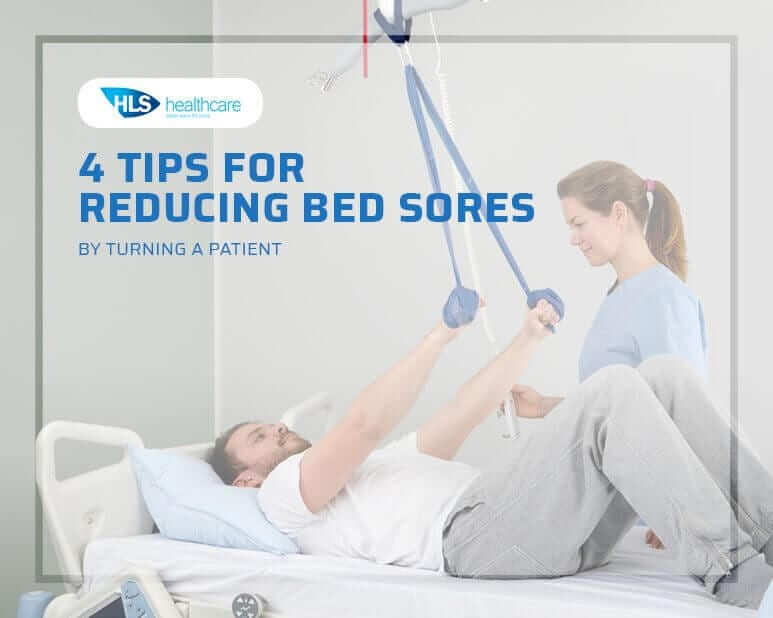Reducing Bed Sores, HLS Website Blog
4 Tips for Reducing Bed Sores by Turning a Patient – HLS Healthcare Pty Ltd
Pressure ulcers or bed sores are skin conditions that occur within the body when there’s excessive pressure on the skin. This is common in people who are classified as “bedridden” because they can’t move or reposition themselves naturally. These sores are not only problematic because they cause discomfort and pain, but they can also lead to infections too, such as cellulitis, meningitis, and endocarditis according to experts.
The areas that are most prone to bedsores are usually located around the bones and joints. For instance, you might notice that your patients experience these problems more commonly across their elbows, tailbone, shoulder blades, hips, and heels. Ultimately, when the body doesn’t get the right amount of movement, it hinders the blood flow throughout the skin and deprives the body of the correct oxygen and nutrients. The question is, how can a nurse or caregiver prevent bedsores?
1. Change Positions Often
Turning a patient frequently into different positions is key to preventing bedsores. When an individual moves from one side to another as often as possible, there’ll be less pressure on his or her skin, which reduces the risk of developing pressure ulcers. It’s generally a good idea to repositioning the body at least once every 2 hours. For instance, if the patient has been laid on their side for a while, they should be moved to their back, and vice versa.
2. Keep Skin Dry and Clean
Besides regularly moving patients, nurses and care providers also need to ensure that the skin of their patients is as clean and dry as possible. Clean, dry skin is less likely to develop sores and ulcers, so it’s a good idea to make sure that people who are bedridden get regular opportunities for wash-cloth baths or “sponge” baths every so often. Importantly, when drying a patient that has just been cleaned, it’s important to ensure that the skin is carefully patted dry with a soft towel. Rubbing is more likely to lead to skin irritation which leads to rashes and sores in the future.
3. Use Plenty of Pillows
Cushions and pillows can be essential to successfully reposition a patient and reduce the risk of bedsores whenever possible. Placing pillows between the parts of the body that are generally rubbing against each other, like the knees, the thighs, and the arms can help to limit the risk of bedsores. Additionally, most health experts recommend placing pillows beneath the shoulders, tailbone, heels, and elbows to improve comfort for the individual in question. If the person is laid on their side, then ideally, they should have a pillow between both their knees and their ankles.
4. Assist the Patient with Exercise
Finally, it can be difficult to understand how a patient will be able to get regular exercise and all the movement that they need to thrive when they cannot move, or they’re unable to get out of bed. However, the truth is that many nurses and caregivers can assist their patients in keeping their muscles engaged while they’re refined to a hospital bed. For instance, assisting a patient in lifting his or her arm up and above their head where they can hold it for as long as possible might help to engage the muscles in the arm and keep the blood circulation in check. Often, if a patient cannot move at all, nurses will frequently stretch and bend their limbs to make sure that the blood within the body can move freely around the system and limit the risk of clots.
If you have any questions about ceiling hoist solutions for the disabled or any of our health care solutions please contact us directly on 1300 931 893

